|
In the last half of the 19th Century, there were those who decided to leave the relatively organized societies of St. Louis, Chicago, or New York to try to find a new life for themselves in California. These travelers were often drawn by the illusory dreams of riches, or sought freedom from stifling traditions. Beehive Charcoal Kilns - 1877These kilns, located at 7,000’ elevation in Wildrose Canyon, were built in 1877 and produced charcoal for the Modock Consolidated Mining Company for about three years. Modock was owned by George Hearst, father of newspaper baron William Randolph Hearst, the original owner of Hearst Castle along the central California coast. 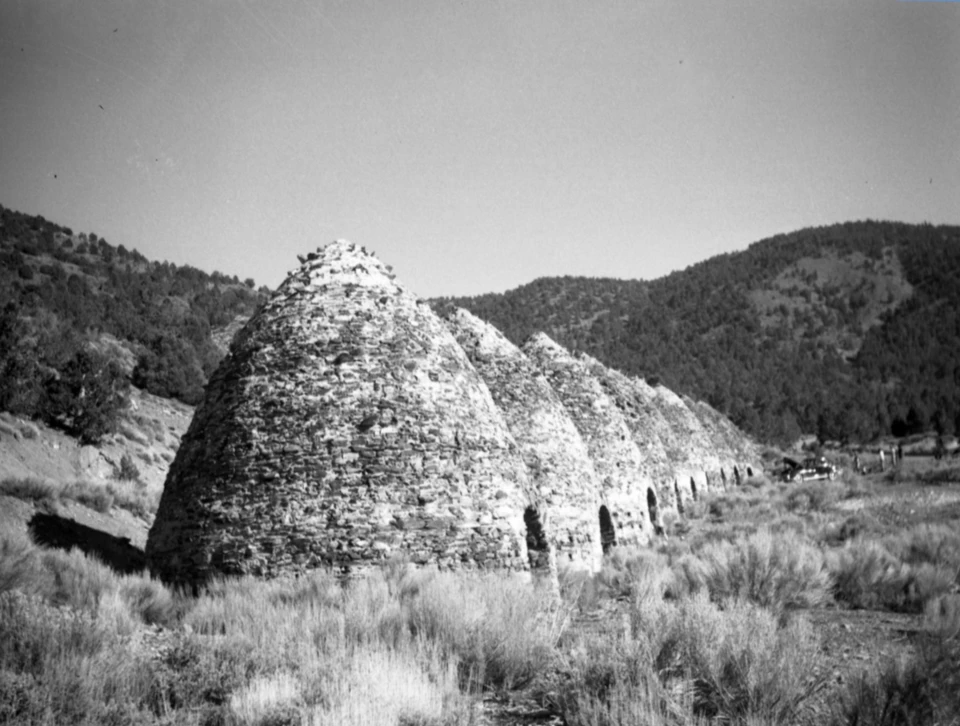
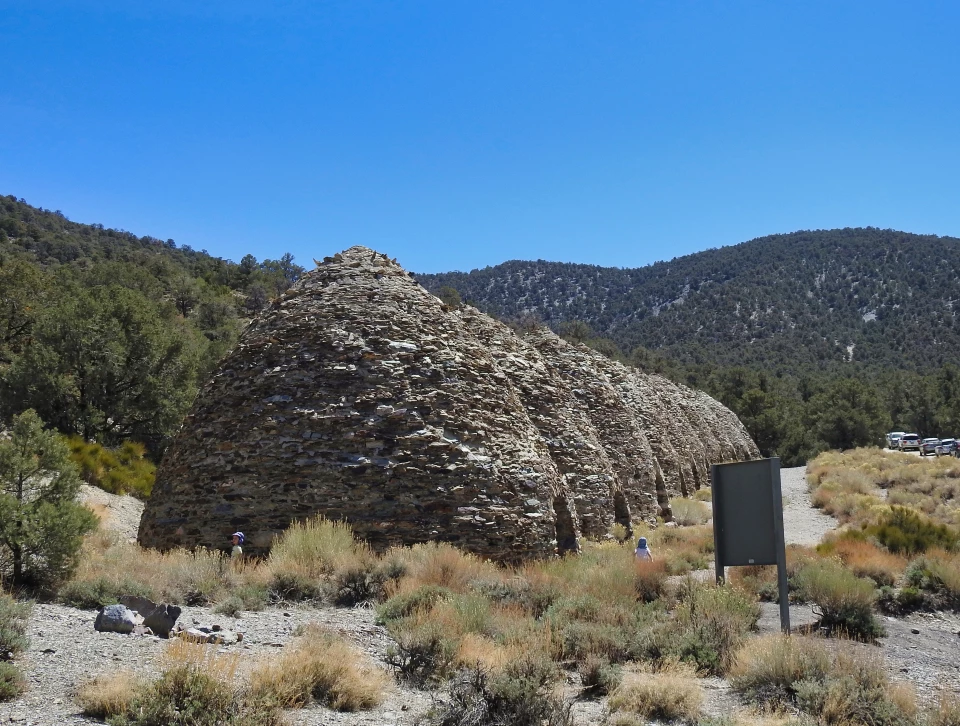
Left image
Right image
Harmony Borax Works and the 20-Mule Team - ca. 1890Just north of Furnace Creek is Harmony Borax Works, the site of a borax refining facility founded by San Francisco businessman William Coleman. It was built adjacent to a large salt pan to avoid the cost of transporting large amounts of mud and salt long distances. Coleman moved over 2.5 million pounds of borax out of Death Valley each year Harmony and other mines were in operation. 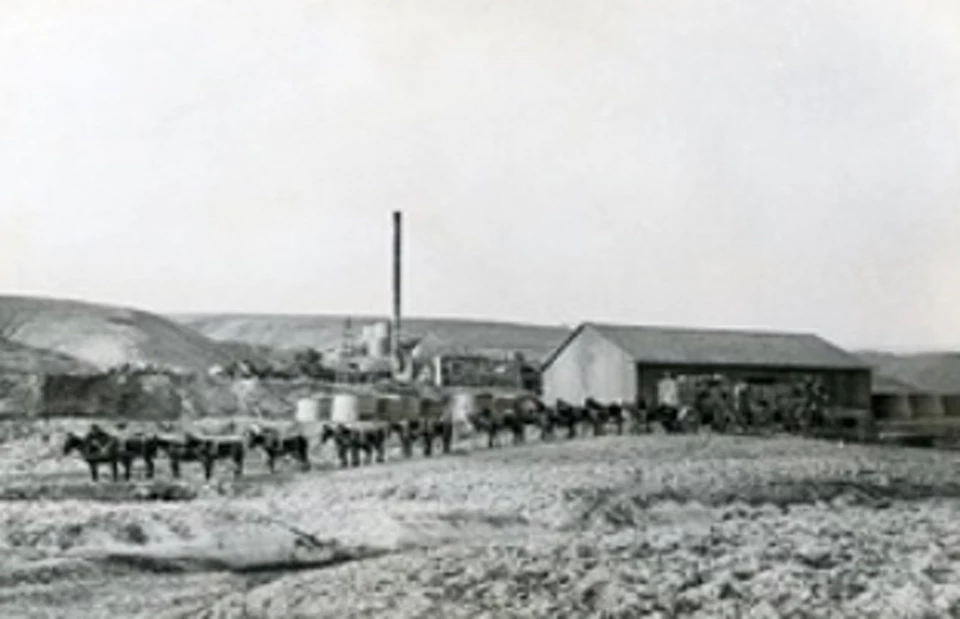
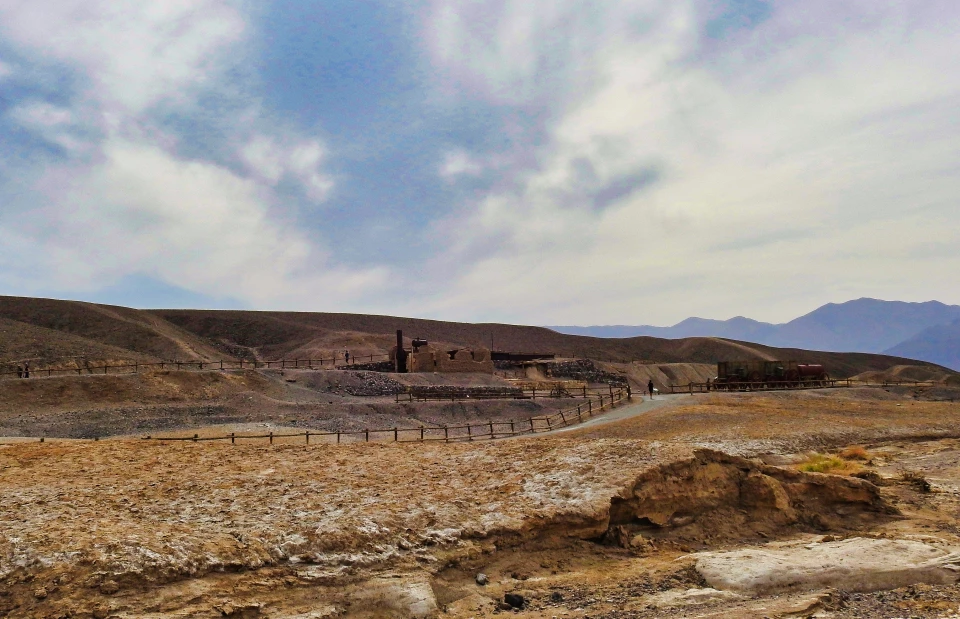
Left image
Right image
Borax Tanks at Harmony - 1900Workers, including Chinese workers, separated mud from the borax by heating water in the boiling tanks, dumping the ore into the tanks, and adding carbonated soda. The borax dissolved and the unwanted salt and mud settled out. The borax liquid was then poured into cooling vats where the compound crystallized on metal rods. Once completely cooled, the rods were taken out and workers chipped off the hardened borax and loaded it into sacks for transport. Borax won’t crystallize at temperatures above 120° F so the operation shut down during the summer. 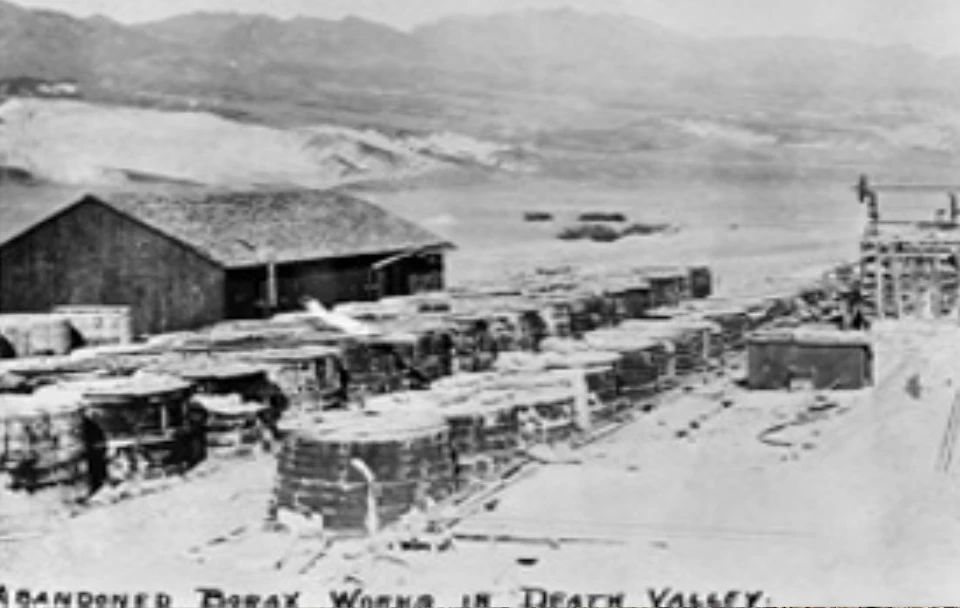
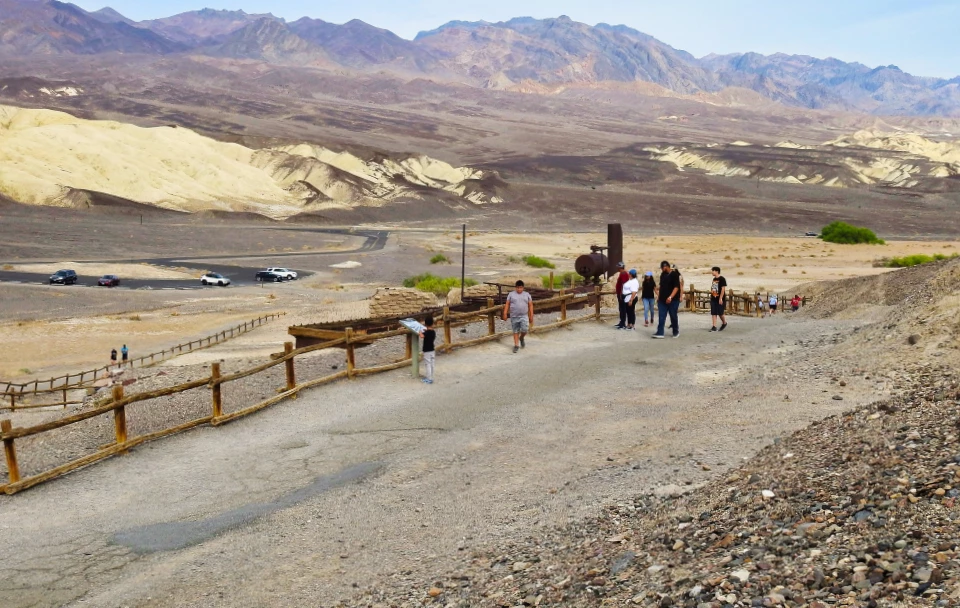
Left image
Right image
Aguereberry Camp's Emigrant Springs Restaurant - 1908Pete Aguereberry was born in 1874 to a Basque family in France. Aguereberry had read about the 1848 gold discovery in California and sailed for America at 16 years of age. He wound up in Goldfield, NV in 1902 and almost died trying to cross Death Valley in 1905 during the summer heat. Pete befriended Shorty Harris, a local prospector, and on a trip to a Fourth of July celebration in Ballarat, discovered a ledge above Emigrant Canyon that contained gold. Pete filed the claims on the north side of the hill while Shorty took the south side. 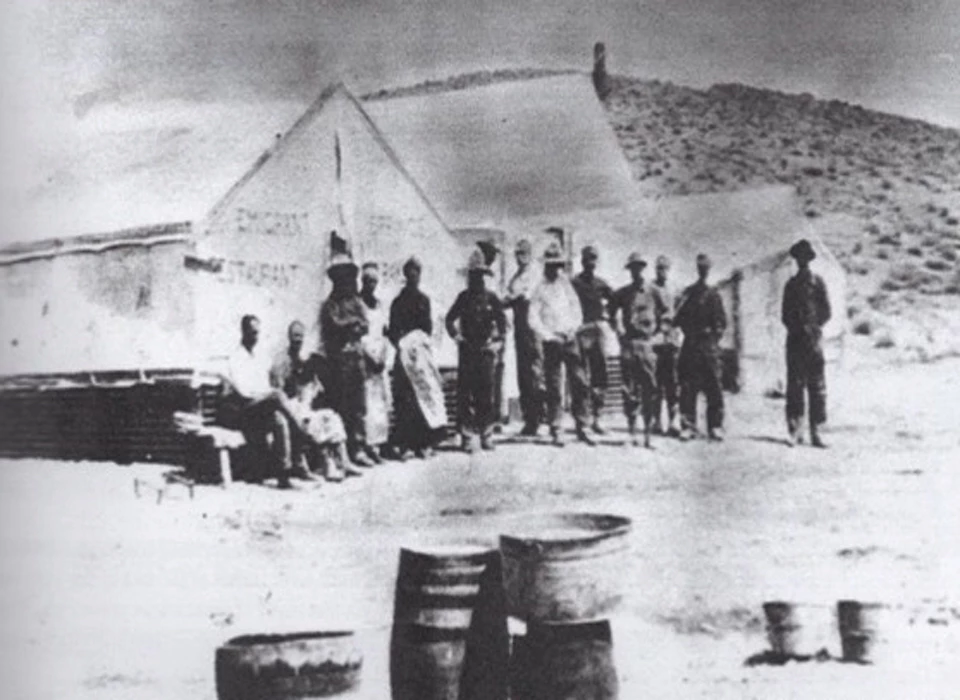
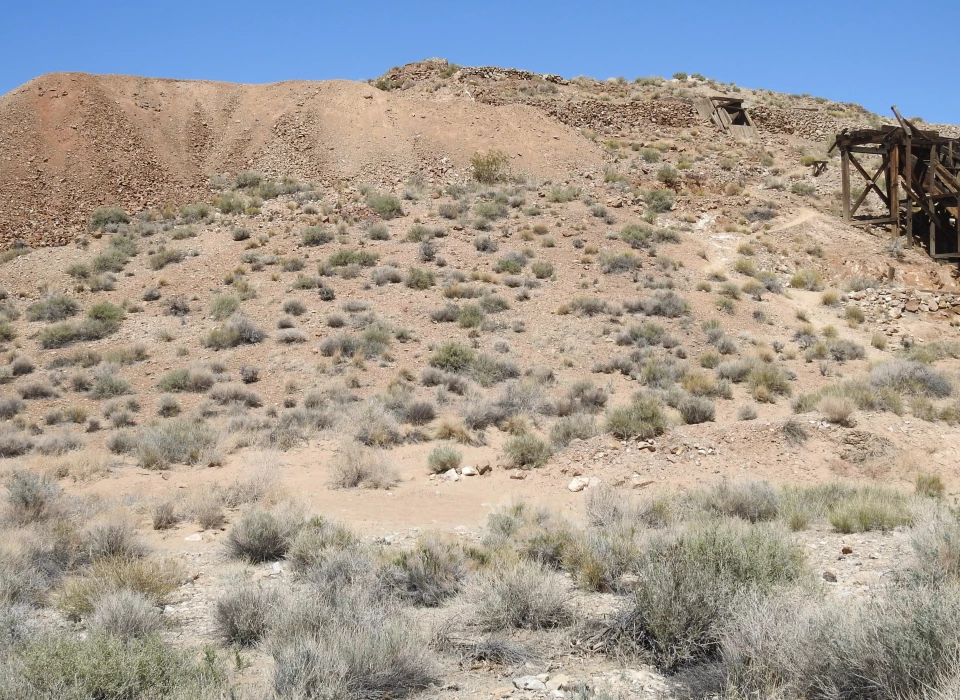
Left image
Right image
Keane Wonder Mine - ca. 1908Named “King of the Desert” by the Rhyolite Herald in 1911, the Keane Wonder Mine in the Funeral Range produced over a million dollars in gold from 1904 to 1917. The operation had a 20-stamp processing mill, housing for its workers, an ice plant, and a mile-long aerial tramway. To increase profits, the ore was mined in horizontal diggings (as opposed to sinking vertical shafts) and moved via the aerial tram down the mountain to the mill for processing. 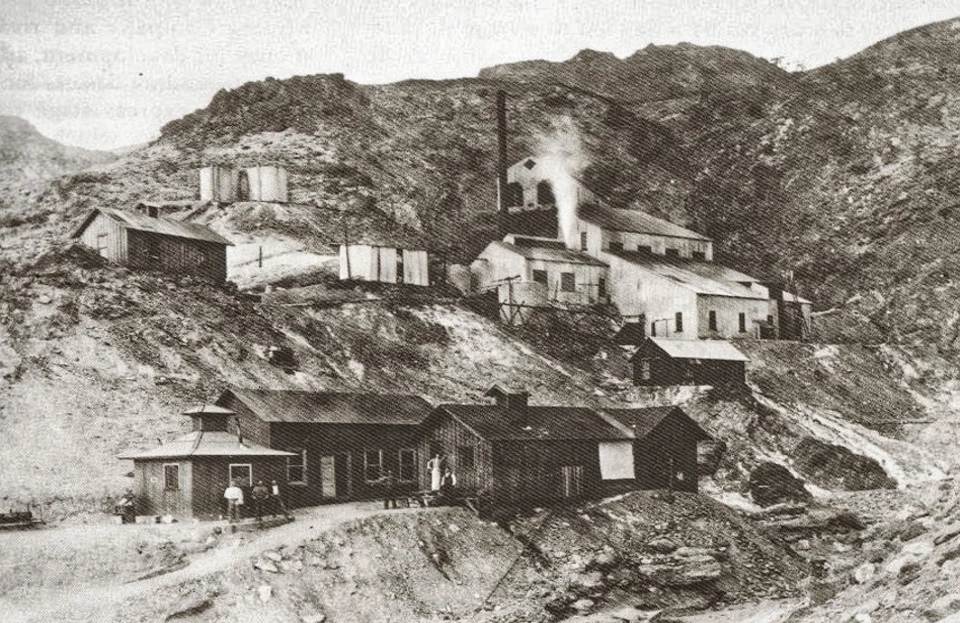
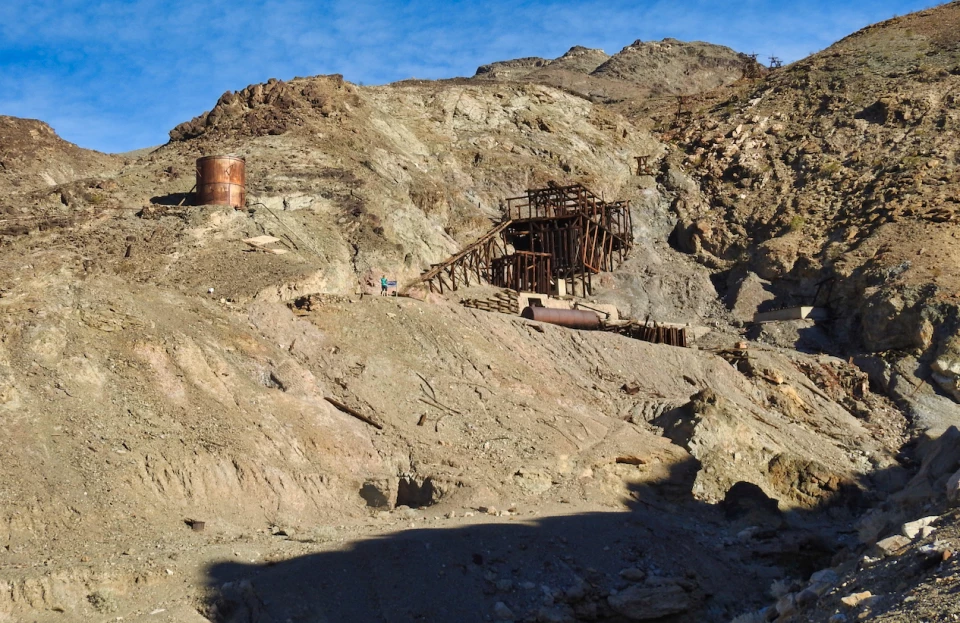
Left image
Right image
Shorty Harris in Mesquite Dunes - ca. 1910Shorty Harris's discovery of surface gold in the Bullfrog Mountains in 1904 launched a rush which fueled the rise of Rhyolite, Harrisburg, and Skidoo. The 5’4” Frank Harris, an orphan from Rhode Island, arrived in Death Valley in the 1870s after having spent time in Leadville, Tombstone, and Idaho country. He was known as a “single blanket jackass” prospector who found good claims but never developed them, preferring to sell them to others. He would go spend the proceeds, typically on alcohol, and return to search for more when his money ran out. Shorty Harris lived on and off with his refillable whiskey bottle, which he named “O be Joyful”, until his death in 1934. 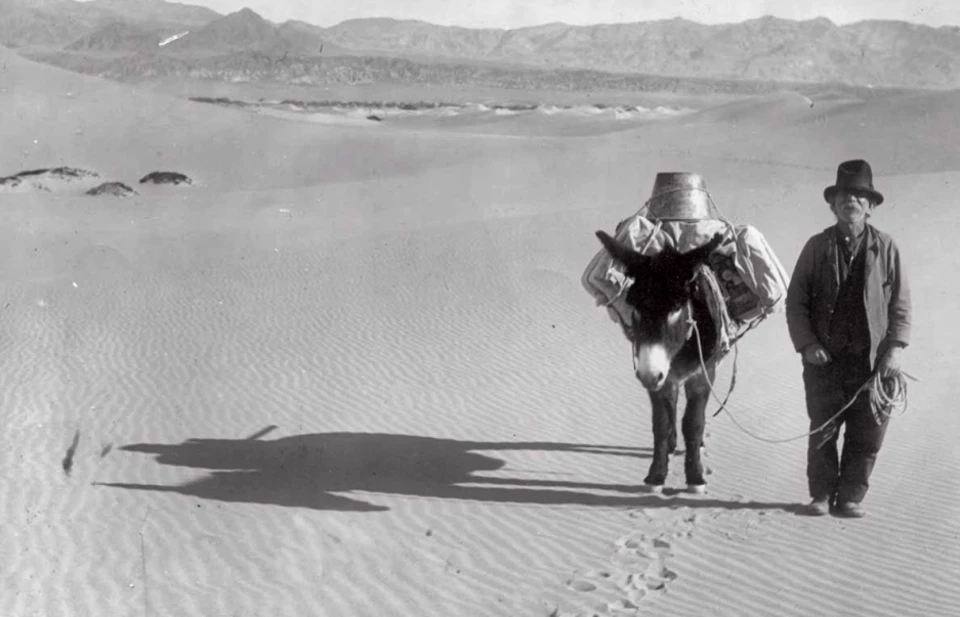
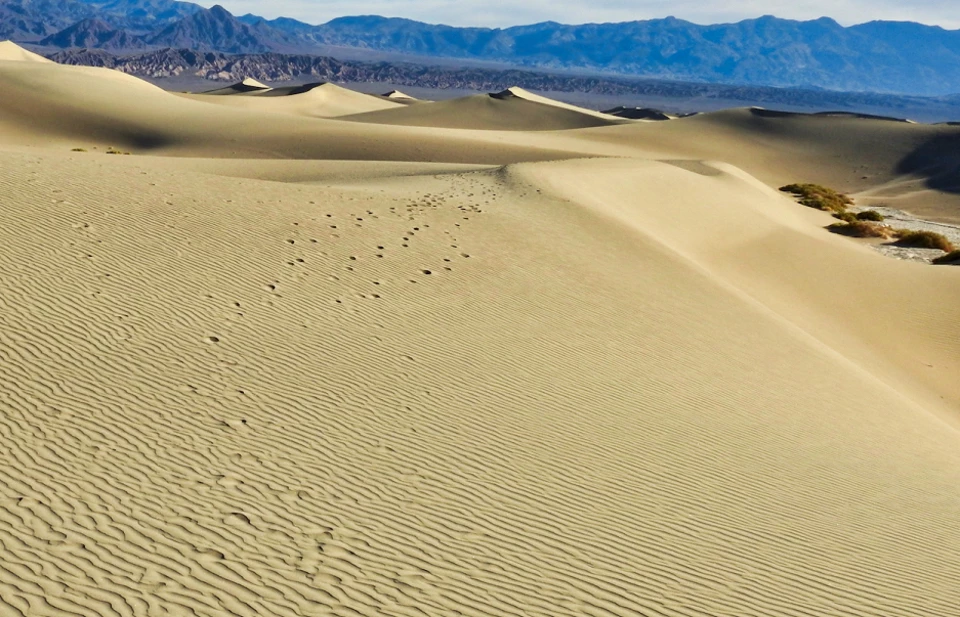
Left image
Right image
Ballarat Saloon - ca. 1920Founded in 1896 near the foot of Surprise Canyon, Ballarat served as a supply point for mines in the Panamint Mountains to the east, including Panamint City. During its heyday from 1897 to 1905, Ballarat was the place for miners to go for fun and relaxation. It sported seven saloons, three hotels, a Wells Fargo station, a post office, school, jail, and morgue. There were no churches. 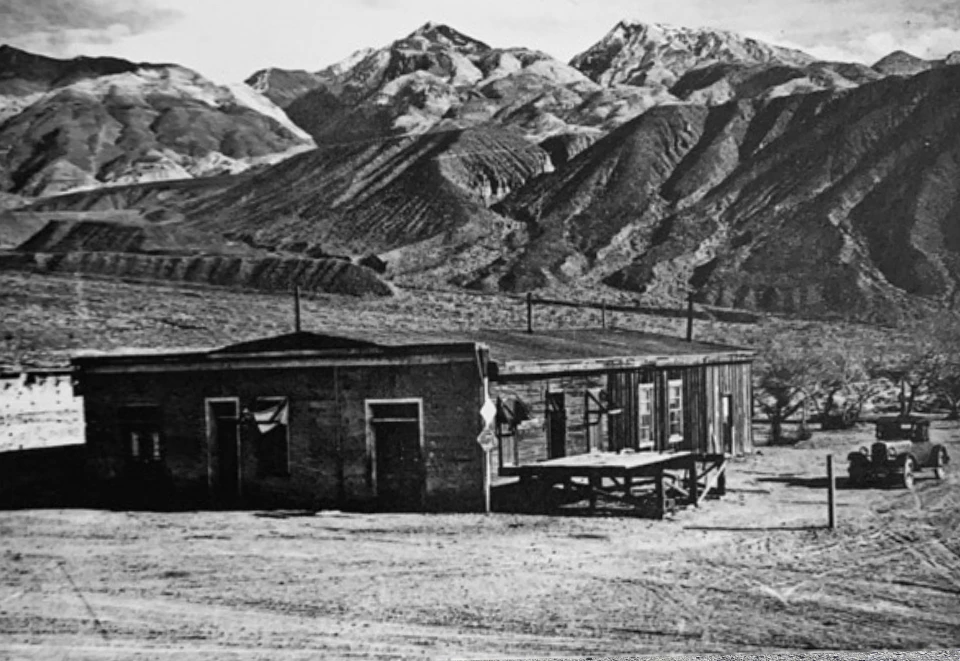
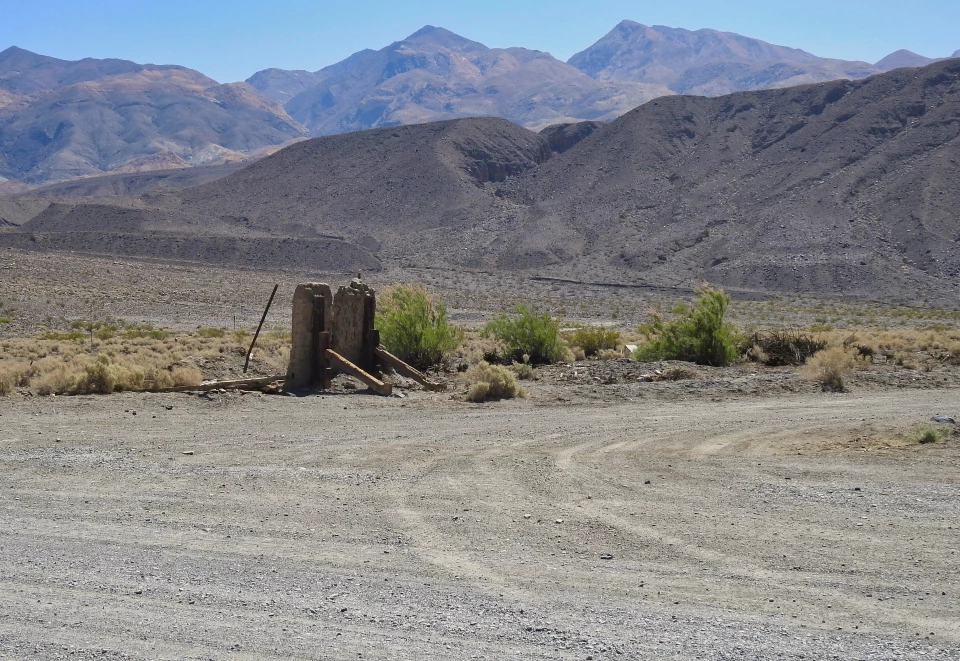
Left image
Right image
Salt Creek Trading Post - 1930Trading posts were scattered across Death Valley, providing opportunities for lonely prospectors to obtain basic supplies and get a little human interaction. 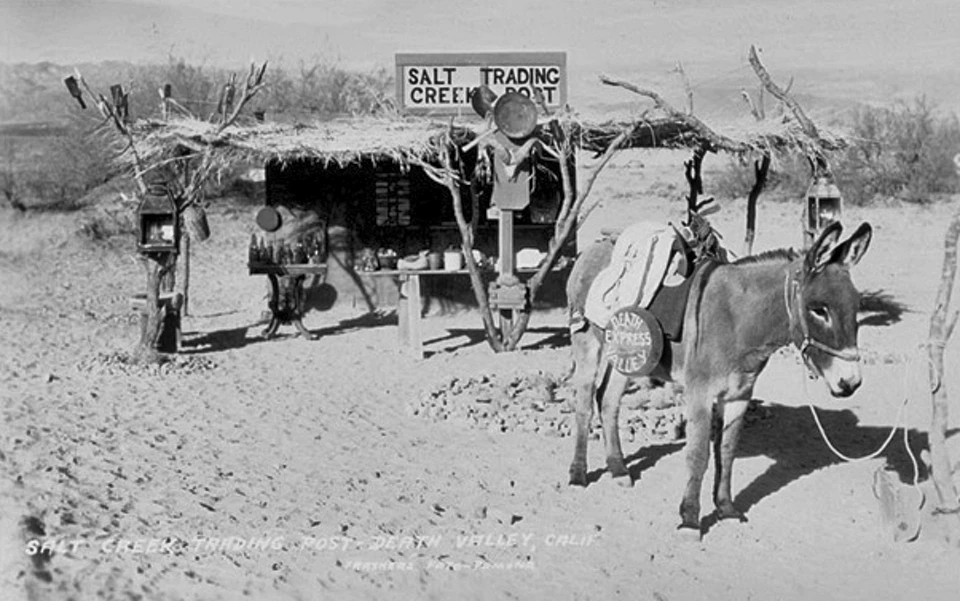
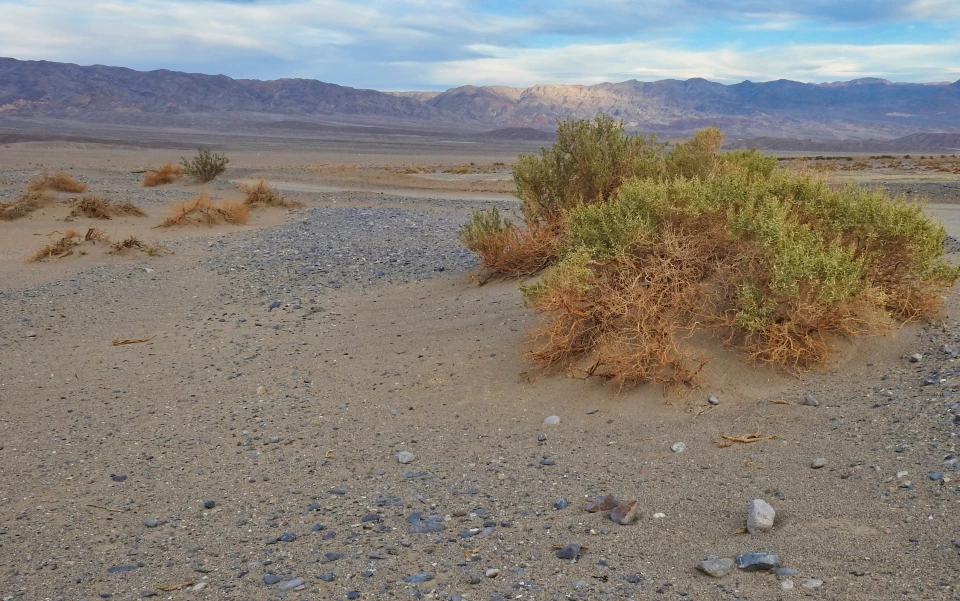
Left image
Right image
|
Last updated: July 31, 2022
